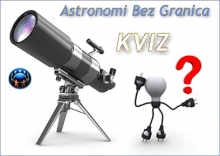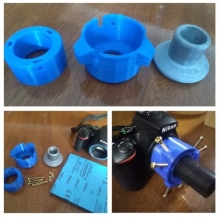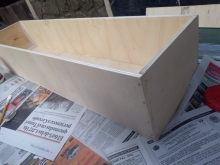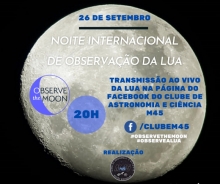by Robert Hollow
On a remote site in the outback of Western Australia sits a new telescope, ASKAP, the Australian Square Kilometre Array Pathfinder. From a distance the 36 white 12m antennas stand in contrast to the surrounding red earth, low shrubs and sparse vegetation against a stunning clear blue sky. The silence is only disturbed a flock of galahs overhead or a bungara (a local lizard) scuttling along the ground.

A panoramic view of the inner dishes of ASKAP. (Image credit: CSIRO)
Developed and operated by CSIRO, Australia's government science agency, the telescope was officially opened in late 2012 at the Murchison Radio-astronomy Observatory (MRO). From 2014 it will provide a unique view of the radio sky courtesy of its innovative radio receivers.
Along with the low-frequency Murchison Widefield Array (MWA), also at the MRO, and MeerKAT in South Africa, ASKAP is a precursor telescope for the future international radio telescope project, the Square Kilometre Array (SKA). These precursor telescopes test the sites, new technologies, and some of the science required for this next generation radio telescope. As part of the dual-hosting agreement, Australia will be home to the SKA’s survey telescope and its low frequency aperture array antennas, while Southern Africa will host the dish array and mid-frequency aperture array.
ASKAP is a truly innovative telescope. It is the first to be designed from the outset to use a new type of radio receiver. Unlike traditional single-feed receivers on most current radio telescopes it uses phased array feeds (PAFs), circuit boards with a chequered pattern of flat metal squares. An ASKAP PAF has 188 elements, giving it a 30 square degree field of view of the sky, or around 150 times the size of the full moon. This means astronomers can survey the entire sky visible from the site more quickly and efficiently than previously possible with traditional receivers.. This opens an emerging field of the changing sky, enabling astronomers to study transient objects in far more detail than we can currently do. Eventually the dishes comprising ASKAP will form part of the SKA survey telescope, allowing whole-sky surveys at much greater sensitivity than any current radio telescope.

A view of an ASKAP antenna with a PAF at the focus. (Image credit: CSIRO)
A telescope with 188 element PAFs on each of its 36 dishes will produce a vast amount of data. Each day a fully operational ASKAP array is expected to generate data equivalent of 124 million Blu-Ray disks, a pile 62 kilometres tall! This data will be processed by an onsite correlator to a more manageable 250 terabytes then sent via a fibre-optic link to a new supercomputing facility in Perth for further processing.
The MRO is a four hour drive (three of those on dirt roads) from Geraldton, the nearest major city 350 km away on the WA coast. You may wonder; why would we build telescopes in such a remote location? The main answer is people, or rather the lack of them. The MRO is situated on Boolardy Station, a cattle station in Murchison Shire. The shire is larger than the Netherlands yet only has a population of just over 100 people.
Importantly, this lack of people also means less of the radio frequency interference (RFI) produced by our modern lifestyle. Radio emissions from diverse industries, mobile phones, microwave ovens, digital TV broadcasts and more can interfere with the highly sensitive operation of radio telescopes and the detection of faint signals from space.
Just as light pollution is a growing problem for optical observatories, RFI can present an issue for radio observatories. To safeguard the future of the telescopes at the MRO, the region around the observatory is protected by the Mid-West Radio-Quiet Zone. This was put in place to manage radio frequency emissions and ensure the area will remain among the most radio-quiet regions in the world.
To minimise the presence of RFI from human activities, ASKAP was designed to be operated remotely, meaning that few people will ever get to visit the MRO, aside from those responsible for the maintenance of the facilities. To visit the MRO is a rare and special feeling. The sense of space and solitude is very real.
Though you may not get to visit the MRO, this stunning time-lapse sequence by Alex Cherney (http://www.terrastro.com/) shows you what the night sky above ASKAP is like.
CSIRO acknowledges the Wajarri Yamatji as the traditional owners of the Murchison Radio-astronomy Observatory.
Links:
CSIRO Australia Telescope National Facility (includes ASKAP): http://www.atnf.csiro.au/
MWA Murchison Widefield Array: http://www.mwatelescope.org/
SKA: http://www.skatelescope.org/
MeerKAT: http://www.ska.ac.za/meerkat/
# # #
 Robert Hollow is an Education Specialist with CSIRO Astronomy and Space Science in Sydney, Australia. Rob coordinates the innovative [email protected] project in which high school students use the 64m Parkes radio telescope to observe pulsars. He is also a member of the Task Force for Astronomy for Children and Schools for the International Astronomical Union's Office of Astronomy for Development.
Robert Hollow is an Education Specialist with CSIRO Astronomy and Space Science in Sydney, Australia. Rob coordinates the innovative [email protected] project in which high school students use the 64m Parkes radio telescope to observe pulsars. He is also a member of the Task Force for Astronomy for Children and Schools for the International Astronomical Union's Office of Astronomy for Development.
Contact:
Robert Hollow
CSIRO Astronomy and Space Science
[email protected]
Twitter: @roberthollow
http://www.atnf.csiro.au/
http://csirouniverseblog.com/






























Comments